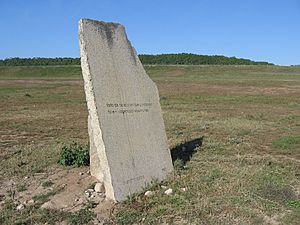António Nobre facts for kids
Quick facts for kids
António Pereira Nobre
|
|
|---|---|
 |
|
| Born | 16 August 1867 |
| Died | 18 March 1900 (aged 32) Porto, Portugal
|
| Nationality | Portuguese |
| Occupation | Poet |
António Pereira Nobre (born August 16, 1867 – died March 18, 1900) was a famous Portuguese poet. He is best known for his book of poems called Só, which means "Alone" in Portuguese. This book was published in Paris in 1892 and was the only one he released during his lifetime.
Contents
Life of António Nobre
Early Life in Portugal
António Nobre came from a wealthy family. He was born in the city of Porto, Portugal. He spent his childhood years in the regions of Trás-os-Montes and Póvoa de Varzim.
Student Days in Coimbra
From 1888 to 1890, António Nobre studied law at the University of Coimbra. However, he did not enjoy his studies and eventually dropped out. He often felt most comfortable in his own room, which he called his "tower," during this time. He was not very involved in the social life of the university.
Time in Paris
After leaving Coimbra, Nobre moved to Paris, France. There, he studied political science at the École Libre des Sciences Politiques. In Paris, he met important French poets like Paul Verlaine and Jean Moréas. He also met the well-known Portuguese writer Eça de Queiroz, who was working as a diplomat in the city.
António Nobre lived in Paris from 1890 to 1895. During this time, he was inspired by a style of poetry called Symbolism, which was popular in France. He wrote most of the poems for his only published book, Só, while he was living there.
Poetry Style and Later Years
António Nobre's Unique Style
António Nobre's poetry was different from what was common at the time. Instead of writing about real-world events or social issues, he focused on his own feelings and ideas. This style is part of a movement called Symbolism. He often used everyday language and expressions in his poems. He also loved to write about his childhood memories and the places he grew up in. He would bring back characters and scenes from his past, making them seem magical.
He was very good at using words to create vivid pictures. For example, he might describe the simple magic of local names or the way people spoke. He also used a lot of "diminutives," which are words that mean "little" or "small," to show his affection and longing for the past.
His Poetic Voice
António Nobre's poems often showed a sense of sadness or a feeling of being alone. He sometimes wrote about his own struggles and his thoughts about illness, which he would later face. Despite this, he always kept an artistic and elegant way of expressing himself. He even wrote about death in a unique way, like in his poem "Balada do Caixão" (The Coffin Ballad).
His poetry also showed a youthful, almost childlike, innocence. He saw the world in a fantastical way, like a fairy tale. He used simple words but put them together in very imaginative ways. For example, he wrote, "When the Moon, a beautiful milkmaid/goes deliver milk at the houses of Infinity."
Music in His Poetry
António Nobre's poems were meant to be heard. They had a strong musical quality, with repeating sounds and rhythms. He paid close attention to how his words sounded together. This made his poetry very flexible and expressive, allowing the rhythm to follow the feeling of the poem.
Last Days and Works
António Nobre became ill with tuberculosis. He tried to get better by traveling to places like Switzerland, Madeira, and New York City. Sadly, he passed away from the disease in Foz do Douro, Porto, on March 18, 1900.
Even though Só was his only book published during his life, two more collections of his poems were released after he died: Despedidas (Farewells) in 1902 and Primeiros Versos (First Verses) in 1921. Many of his letters have also been collected and published, giving us more insight into his life and thoughts.
Recognition
A special monument dedicated to António Nobre can be found near Boa Nova beach in Leça da Palmeira. It was designed by the famous architect Álvaro Siza Vieira and was built in 1980. The words on the monument say: "tired of pains that killed him, he traveled through that world - to António Nobre, 1980."
See also
 In Spanish: António Nobre para niños
In Spanish: António Nobre para niños


